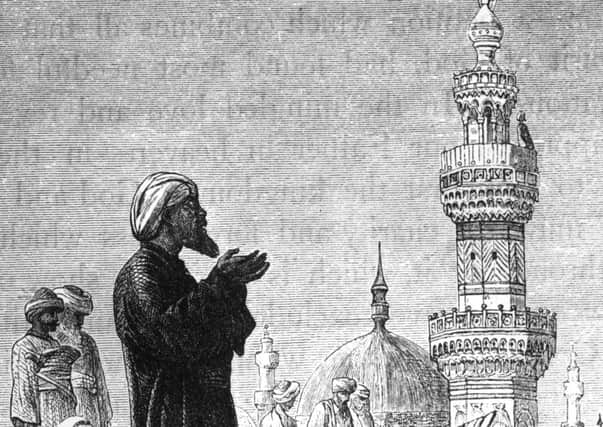Review: Tales Of The Marvellous And News Of The Strange


Tales Of The Marvellous And News Of The Strange
Translated by Malcolm C Lyons and with an Introduction by Robert Irwin
Penguin Classics, £25
THIS must be one of the most curious books I have ever reviewed. It is the first English translation of a manuscript found in a library in Istanbul in 1933. Or rather half a manuscript: the contents page promises 42 stories and we have 18, and its title given here is the subtitle, the actual title page also having been lost.
Advertisement
Hide AdIt claims to be derived from “a well-known book”, and although the manuscript might be dated from anywhere between the 14th and 16th centuries, internal evidence from the stories has led those who have studied such matters to claim they might date back to the 10th century. It is tempting to concur with Salah al-Din al-Munajjid that this might be the lost book of 380 stories put together by al-Jahshiyari; but that irksome detail that it was “taken from a well-known book” might mean this is someone else’s redaction of al-Jahshiyari’s still lost book. What is clear is that it influenced the One Thousand And One Nights, and that it is a good contender for being the earliest Arabic story collection we have.
It is a profound oddity, but an absolutely intriguing one. You cannot read these stories expecting them to be akin to Children’s And Household Tales by the Brothers Grimm or Pu Songling’s Strange Tales From A Chinese Studio or Somadeva’s Ocean Of The Stream Of Stories. The tales here have an odd roughness, a making-it-up-as-you-go-along quality – in one, Talha, The Son Of The Qadi Of Fustat, the hero of the story sleeps with the sorceress at the beginning of his quest, then sleeps with her 39 accomplices, then with the sorceress again, only to find she is still a virgin. I suppose sorceresses might be able to accomplish such things. But in others, such as The Story Of Sul And Shumul or The Story Of Miqdad And Mayasa, the tale is interwoven with poetry, suggesting a more literary audience.
The stories do have a common set of linguistic markers. Many begin “They say – and God knows best – that…”, an equivalent of our “Once upon a time”. As the narrative switches between characters, the phrase “so much for them, but for” introduces the new part of the yarn. Beautiful faces are usually moonlike in their radiance, and some of the similes will surprise the reader – a good singing voice is like almond paste, for example. Many of the stories have a frame in which a caliph is unsettled and insomniac, and demands of his vizier that a person be brought to entertain him, usually with tales of far-off lands, women in glass boxes, djinns, ifrits, moving statues and tales of unexpected coincidence. They often have a melancholy edge, with the treasure seeker or prince being reduced to penury, and the fear of the “Destroyer of Delights and Divider of Unions”; in other words, Death. The treasure-seekers find vast wealth tempered with melancholy admonitions about its transitory value.
Some radically challenge our moral and literary norms. In The Six Men: The Hunchbacked, The One-Eyed, The Blind, The Crippled, The Man Whose Lips Had Been Cut Off And The Seller Of Glassware – and, by the way, it isn’t just his lips they had cut off – a typically ennui-ridden caliph calls for stories, and the variously maimed are brought to him. At the end of each of their stories of humiliation, in which getting a sound thrashing is customary, the caliph laughs and rewards them. One can’t help thinking of Simon Cowell.
The Story Of ’Arus al-’Ara’is is a sustained piece of misogyny, predicated on the idea of a caliph so distraught at the death of his infant daughter he requires a late night jackanory about how all women are intrinsically wicked and duplicitous.
Literature from outside the Arabic tradition also has its moments which might make a modern reader squeamish. Chaucer has scenes of degraded, lovelorn fools; the Icelandic sagas are full of sordid and silly antics. Objectionable depictions are not the preserve of any one culture. Sadly, they are ubiquitous.
Advertisement
Hide AdThat said, this weirdly compelling book also contains a precursor to Idries Shah’s Mulla Nasrudin stories, with holy fools who outwit the sanctimonious, and one bizarre piece about how Hatim al-Bahili met a monk, Simeon, who had been a friend of the prophet Daniel and a disciple of Jesus, and who begged Allah to let him live to see the coming of Muhammad. It includes an early piece of Islamic paranoia – that Jews and Christians conspired to keep the name of the Prophet out of the Old and New Testaments. Did a theological proposition become embroiled in a folk tale about faraway lands, or did theology retool an old tale for its own ends?
This book is an astonishment, and I can only commend Penguin for their ongoing work of introducing non-European literature to a wider audience. Long may it continue.